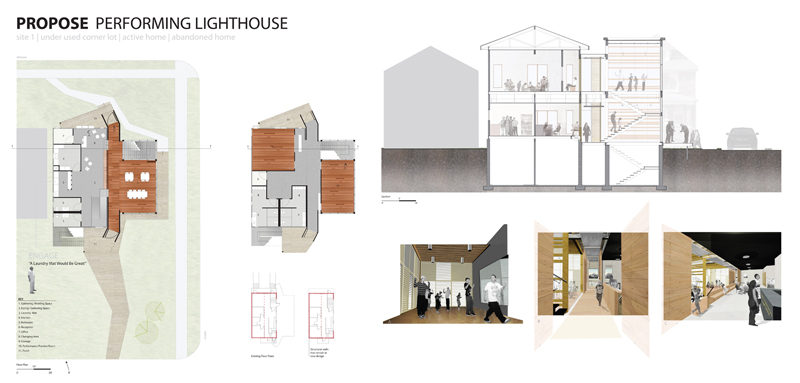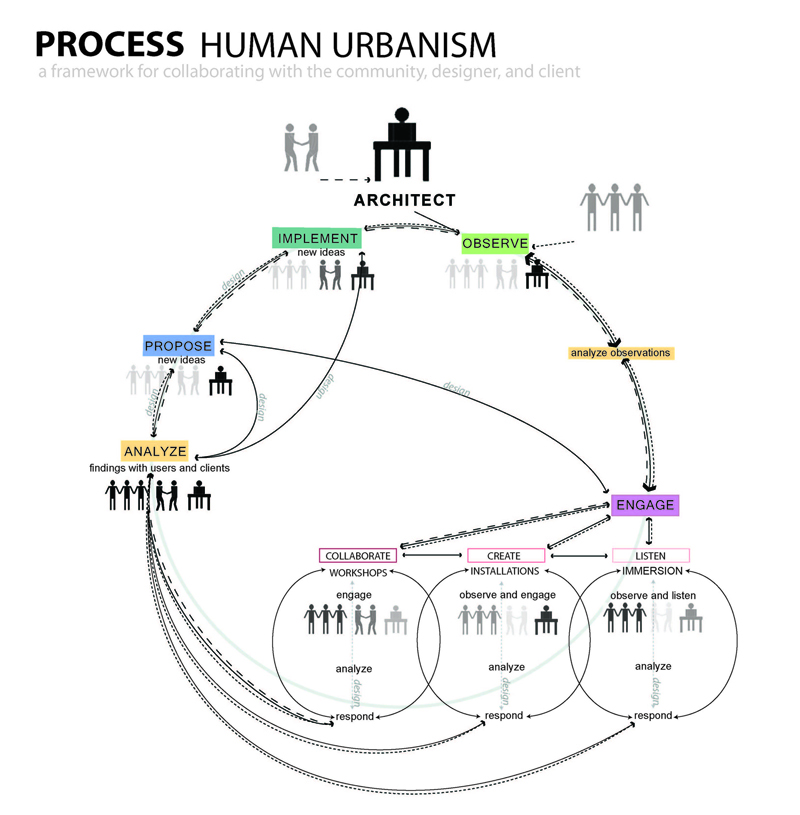Human Urbanism
|
Student: Krista Wilson
The way humans react to and engage space defines its use and purpose. Or in other words, the human is at the core of our understanding of space. Every space is unique due to the different patterns of use defined by the human; this is what distinguishes space from place. Therefore, the human is the basis for creating place. This principle can apply to a larger scale such as a community. Communities shape space through the complex relationships and movements made over time. Thus, the relationship of a human, community and their place forms a specific meaning expressing a unique culture and spirit. Places rich with culture, life and engagements should be expressed through architecture allowing architecture to be the physical manifestation of the spirit in a particular place. Unfortunately, many communities that are diverse and culturally rich are hidden under blight and are unable to show their individuality of place. This leads to disinvestment in the neighborhood, lack of pride by the residents, and further, an inability to thrive in one’s own place. This condition expresses a disconnection between of people and place in many communities, especially in low income urban neighborhoods that struggle to survive. How can design empower the community’s unique character and spirit to create a place that visually celebrates their individuality?
The goal of this thesis is to understand how architecture, design and it’s process can be more responsive to the changing urban landscape and the culturally rich communities that inhabit them. Contrary to current methods of deriving urban plans based on form and function, a modified form of urbanism is suggested; an urbanism that grows and builds with the people, the community, and their place. This modified urbanism, called “Human Urbanism”, is based on the process of finding and expressing the spirit and desires of a community through observation, analysis, participation and being integrated with the local culture. How can these ways of seeing space (observation, analysis, engagement and immersion) inform design that embodies the spirit of place? In response to this question, this thesis seeks to formulate a framework and process for the architect (and the community and client as well) that can be used to amplify the spirit of communities through a modified design approach. There are places in every community that define its character and spirit. Finding these “hidden”, “left over spaces” and celebrating them individually through a form of architecture is one approach that “Human Urbanism: immersion into place” investigates.
|













